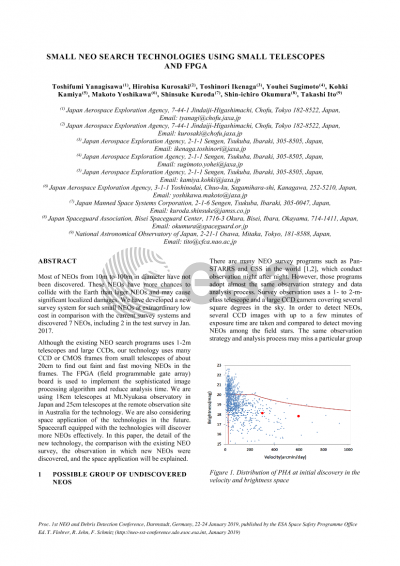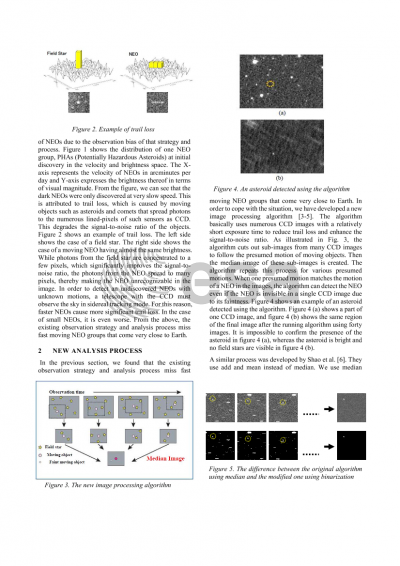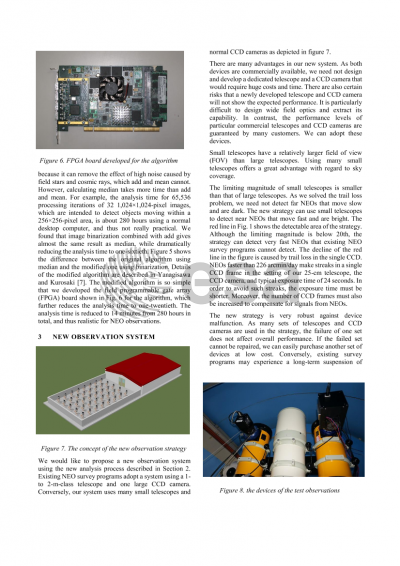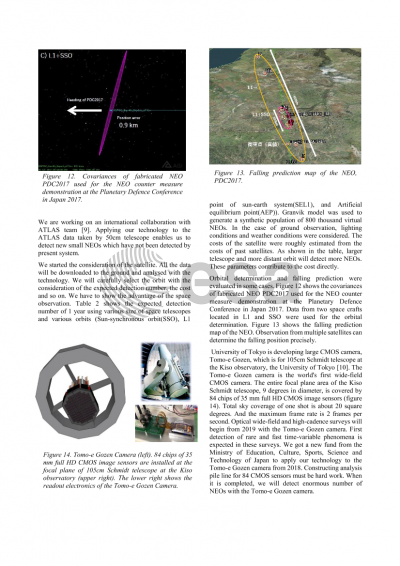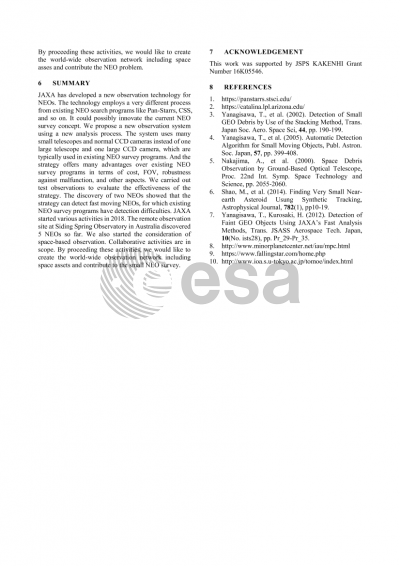Document details

Abstract
NEOs with the size range from 10m to 100m are almost not discovered. NEOs of these size range have more chances to collide with the Earth than larger NEOs and may cause a significant damage to the local area. Finding these NEOs is more important as the large NEOs are almost discovered. We are developing a new observation technology for such NEOs with relatively low costs. The technology has very different method for NEO detections from the existing NEO search programs like Pan-Starrs, CSS and so on. It may innovate on the present NEO survey concept. Although the existing NEO search programs uses 1-2m telescopes and large CCDs, the technology uses many CCD or CMOS frames from small telescopes of about 20cm to find out faint and fast moving NEOs in the frames. The FPGA (field programmable gate array) board is used to implement the sophisticated image processing algorithm and reduce analysis time. We are using 18cm telescopes at Mt.Nyukasa observation facility in Japan and 25cm telescopes at the remote observation site in Australia for the technology. 6 NEOs have been discovered since January 2017. The discovery of NEOs in Japan was after a lapse of about 9 years. Discovering new NEOs with such small telescopes is magnificent and cost-effective. We are also considering space application of the technologies in the future. Spacecraft equipped with the technologies will discover more NEOs effectively. In this talk, the detail of the new technology, the comparison with the existing NEO survey, the observation in which new NEOs were discovered, and the space application will be explained.
Preview
